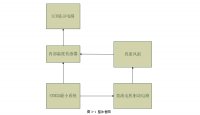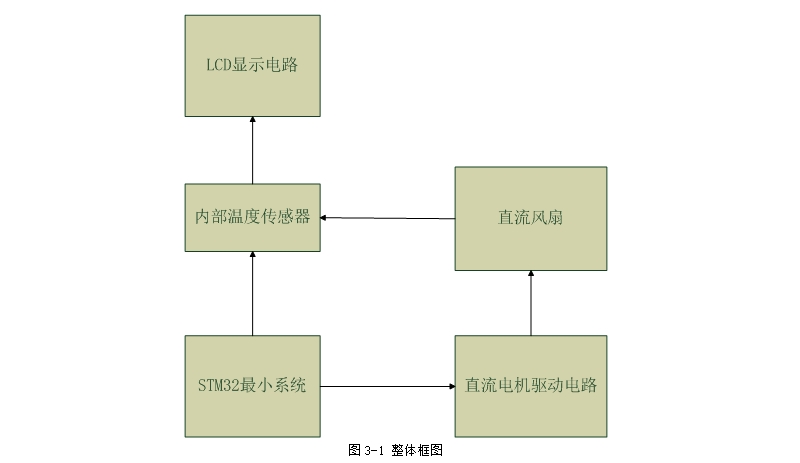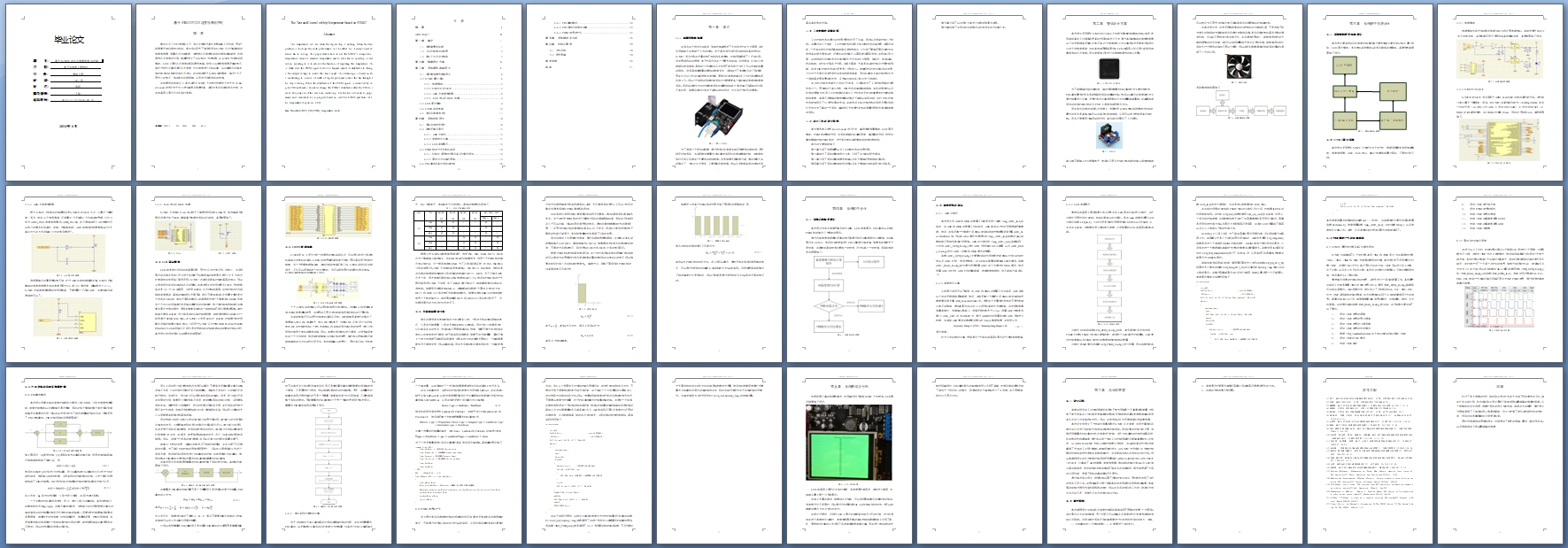基于STM32的芯片温度检测与控制

基于STM32的芯片温度检测与控制(任务书,开题报告,外文翻译,论文11000字)
摘 要
数字芯片工作时温度会上升,当芯片温度过高时会影响其工作性能,因此一般需要外接风扇使之冷却。本文深入研究了如何利用在STM32芯片内部集成的温度传感器,测量芯片内部温度,并根据芯片温度来驱动风扇加速或减速,达到调节芯片温度的作用。本课题设计了以STM32为控制器、以L298N为风扇驱动模块、LCD上显示芯片温度的系统硬件电路。软件上以温度传感器采集的电压值经过转化计算后得出芯片温度,对该温度进行PID运算,以运算得出的偏差值控制PWM脉冲的实时占空比。将该脉冲通过L298N驱动模块,输出一个不同大小的电压,加在直流风扇两端,从而改变风扇当前的转速。
在软硬件综合验证上,本文以野火STM32开发板作为硬件开发平台,在Keil uVision4软件开发平台上进行编程及结果仿真,实现对直流风扇的动态控制,并在液晶屏上显示出芯片实时温度。
关键词:STM32 PID PWM 温度 Keil4
The Test and Control of chip Temperature Based on STM32
Abstract
The temperature will rise when the digital chip is working. When the temperature is too high the work performance will be affect. So it always need external fan to cooling. This paper studies how to use the STM32’s compositive temperature sensor to measure temperature and to drive fan to speed up or reduction according to it to achieve the function of regulating the temperature. This study uses the PWM signal to drive a fan,and adjust its dutyfactor to change the output voltage to control the fan’s speed. This technology is based on the modulating to a series of width of digital pulse,and control the fan through the chip’s driving. While the dutyfactor of the PWM siginal is controlled by digital PID arithmetic. Controler change the PWM’s dutyfactor after the PID to realize the purpose of the real time controlling. Use the Keil uVision4 to programme and emulate to be in progress based on wild fire STM32,and then let the temperature display on LCD. [资料来源:Doc163.com]
Key Words: STM32; PID; PWM; temperature; Keil4
[来源:http://www.doc163.com]



目 录
摘 要 I
ABSTRACT II
第一章 绪论 1
1.1 选题背景和依据 1
1.2 工业控制理论的发展 2
1.3 本文工作及论文结构 2
第二章 整体设计方案 4 [版权所有:http://DOC163.com]
第三章 系统硬件电路设计 6
3.1 系统整体硬件电路设计 6
3.2 STM32最小系统 6
3.2.1 电源模块 7
3.2.2 STM32F103VET6 7
3.2.3 ADC及温度传感器 8
3.2.5 JTAG接口及REST按键 9
3.3 LCD显示模块 9
3.4 L298N驱动电路 10
3.5 直流风扇调速方法 11
第四章 系统软件设计 14
4.1 系统总体软件设计 14
4.2 温度采集及显示 15
4.2.1 ADC初始化 15
4.2.2 温度转化计算 15
4.2.3 LCD温度显示 16
4.3 PWM脉冲产生及电机驱动 18
4.3.1 STM32通用定时器及其工作模式设定 18
4.3.2 固定占空比输出原理 19
4.4 PID算法及其对系统的控制 20
4.4.1 PID算法概述 20 [资料来源:https://www.doc163.com]
4.4.2 PID实现对温度的计算 22
4.4.3 PWM信号的产生 23
第五章 系统测试及分析 26
第六章 总结与展望 28
6.1 论文总结 28
6.2 研究展望 28
参考文献 30
致谢 31 [资料来源:http://doc163.com]
